
Cockroach Control in Charleston, SC — Fast, Family-Safe Exterminators
Charleston, SC is famous for live oaks draped in Spanish moss, salt-marsh sunsets, and long porch seasons—but our warm, humid Lowcountry climate is also paradise for cockroaches. From historic single houses downtown and townhomes on Daniel Island to family neighborhoods in West Ashley, Mount Pleasant, and Summerville, roaches slip indoors searching for moisture and food. Besides being unnerving, cockroaches spread allergens and bacteria, aggravate asthma, and multiply quickly if they’re not handled with a plan built for coastal conditions.
All U Need Pest Control specializes in cockroach control in Charleston, SC, using targeted, low-odor treatments and a prevention-first strategy tuned to tide cycles, summer storms, and year-round humidity. Whether you’re battling German roaches in a condo kitchen off King Street or large “palmetto bugs” (American cockroaches) wandering in from courtyards in the Old Village, we’ll identify the species, eliminate the colony, and keep them from coming back—safely, discreetly, and with clear guidance that works for Charleston homes.
Pest Control Services in Charleston, SC
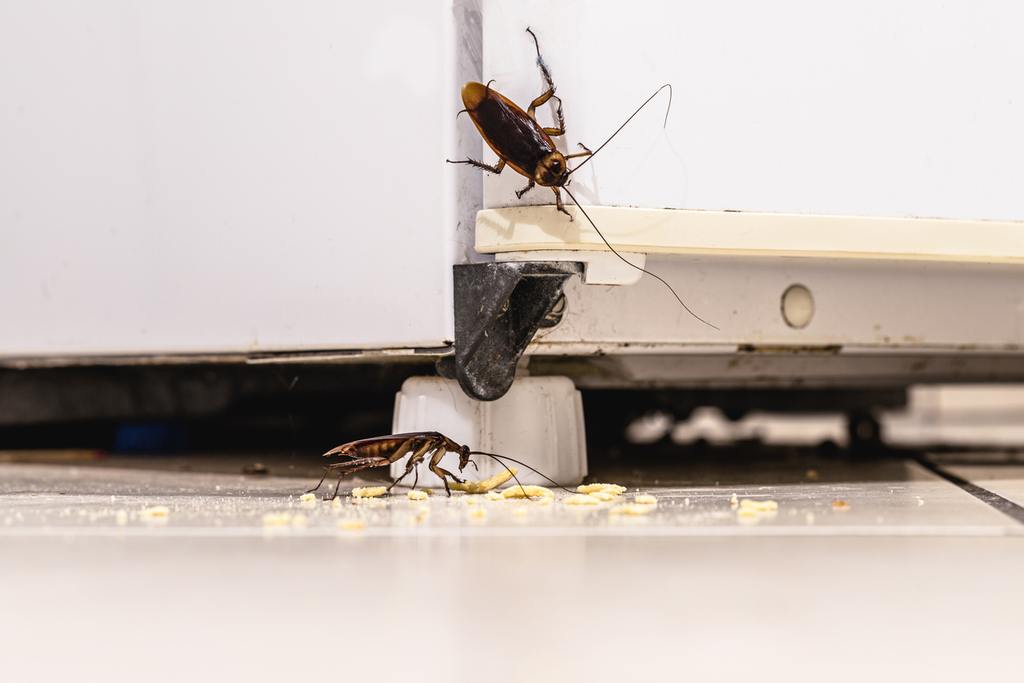
How to Get Rid of Cockroaches in Charleston, SC
Success in the Lowcountry starts with correct species ID and a strategy that respects how Charleston homes are built. Many residences here are raised on brick piers with ventilated crawl spaces, have pier-and-beam additions, or feature shaded courtyards and thick landscape beds—perfect staging grounds for roaches. In this environment, precision baiting and non-repellent applications are the backbone of reliable control. Foragers feed on professional-grade baits, carry them to harborage, and share the active ingredient through grooming and droppings so the entire population declines—not just the few you see on the counter.
Because humidity drives activity, we design placements that keep performing where warmth and moisture overlap: under sinks, behind refrigerators and dishwashers, at ice-maker and washing-machine lines, around water heaters, and near AC condensate drains. The same goes for exterior pressure: we focus on weep holes, foundation cracks, utility penetrations, porch steps, crawl-space vents, and the first foot of mulch around the slab—spots that become “on-ramps” after afternoon storms or king-tide flooding.
Large peridomestic species—American and Smokybrown cockroaches, both commonly called “palmetto bugs” here—need a slightly different angle. Targeted crack-and-crevice work and void treatments create an invisible barrier in the places they rest: roof eaves, tree canopies that overhang the house, soffit and gable vents, meter boxes, and utility chases. The goal is simple: make every preferred stop on a roach’s nightly route unsafe for them, while keeping treatments out of the spaces your family and pets touch.
Every Charleston home is its own ecosystem. A 19th-century single house off Rutledge may need crawl-space moisture corrections and weep-hole guards; a Johns Island ranch may need irrigation and mulch adjustments; a Mount Pleasant townhome may need sealing and baiting in shared walls; and a Folly Beach cottage may require extra attention to exterior lighting and door sweeps because night-flying Smokybrowns are attracted to lit entryways. We fold those realities into a plan that solves the root causes, not just the symptoms.
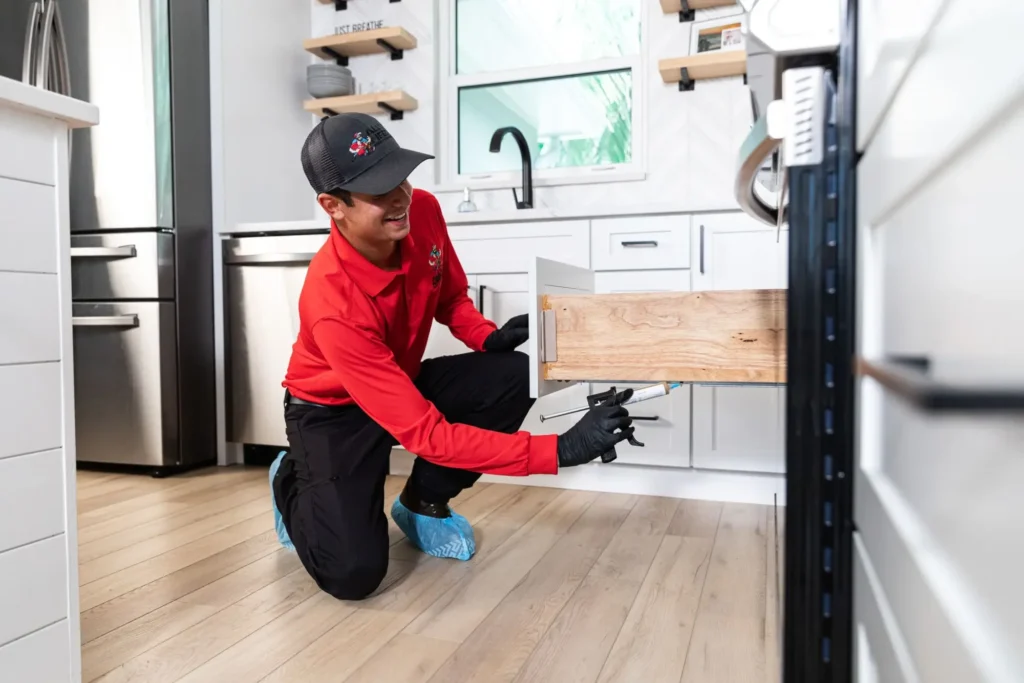
Cockroach Treatment in Charleston, SC
Our Charleston-specific protocol follows a clear sequence tailored to your property and neighborhood microclimate.
Inspection. We start by mapping heat, water, and food sources throughout kitchens, baths, laundry rooms, mechanical closets, and garages, then evaluate the exterior: mulch depth against the foundation, thick hedges along piazzas, downspout discharge, AC pads, hose bibs, and trash areas. In historic homes and renovations, we also check crawl spaces for standing water, poor ventilation, or torn vapor barriers that invite roaches and keep them comfortable.
Identification. Species determines placement and products. German cockroaches thrive in kitchens and baths and demand surgical baiting and non-repellent micro-treatments. American and Smokybrown cockroaches breed outdoors and surge indoors after storms or during heat waves—these call for exterior habitat work and strategic interior exclusions. Brown-banded (more likely in drier, high locations like upper cabinets and bedrooms) and Australian cockroaches (often linked with lush, irrigated landscaping) also appear across Charleston.
Plan & Prep. You’ll get practical, five-minute daily habits that starve roaches of food and water between visits—no cabinet-emptying marathons required. Common Charleston tweaks include extending downspouts so water doesn’t pool beside brick piers; pulling mulch and pine straw a few inches back from siding; trimming jasmine, ivy, and ligustrum off the structure; and elevating pet food in mudrooms where humidity is high.
Treatment. We deploy discreet gel baits and stations where roaches travel; non-repellent residuals and dusts in inaccessible voids; and exterior spot treatments at proven harborage. We emphasize places Charleston roaches love: toe-kicks and hinge lines, gaps behind built-ins, cabinet-back penetrations, floor drains in older downtown buildings, and crawl-space utility routes. By treating the network—not just the endpoint—we collapse the colony and cut off reinforcements.
Follow-up & Prevention. Charleston’s seasonality means pressure changes month to month. We re-evaluate, refresh baits, and tune placements, then lock in a light, recurring exterior service that keeps protection active through hurricane season (June–November), when stormwater and heat push outdoor species inside. If activity persists between visits, we adjust quickly—because in the Lowcountry, small moisture changes can create new hot spots overnight.
The outcome is predictable: rapid relief now, sustained protection later—without over-treating your living space or leaving you to guess what changed week to week.
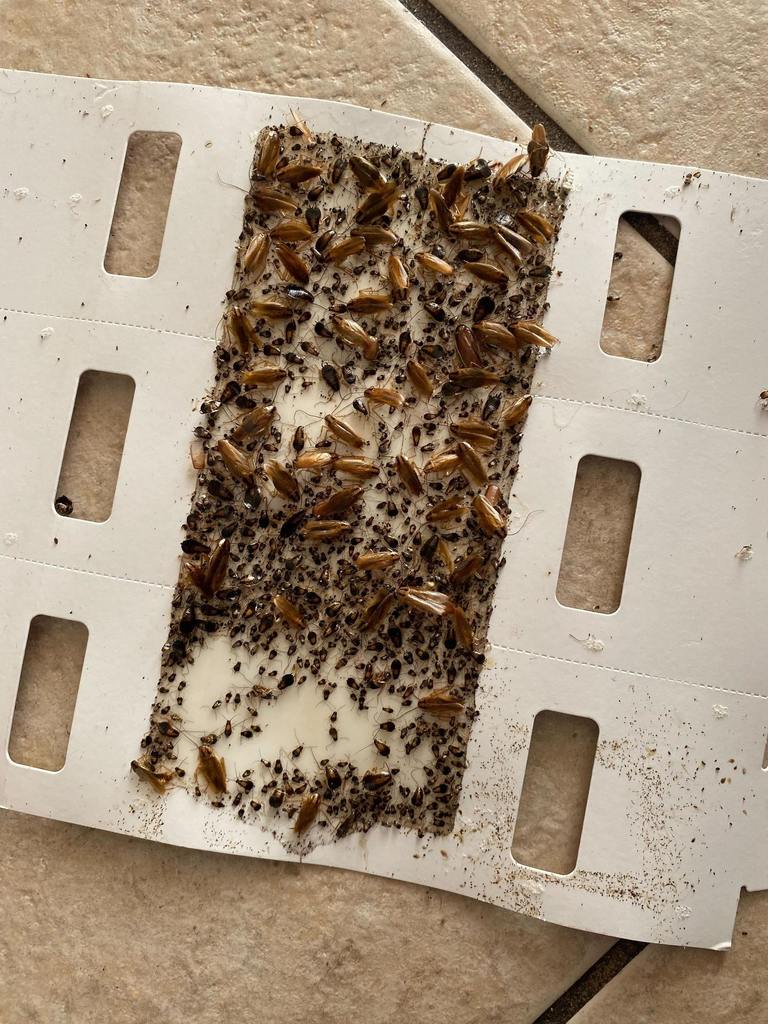
Signs of a Cockroach Infestation in Charleston, SC
Early clues often surface where warmth and moisture meet. Pepper-like specks beneath sinks, behind appliances, or in the corners of pantry shelves suggest foraging. Tan shed skins tucked into tight gaps, a faint musty odor in enclosed cabinets, or egg cases hidden along drawer slides are strong indicators. Nighttime scatter when you flip on the kitchen light means active trails; daytime sightings typically signal heavy pressure or disturbed harborage. In many downtown and North Charleston buildings, floor drains and utility chases act as highways—if roaches consistently appear in bathrooms or laundry rooms, those conduits may be involved. Outside, watch mulch rings, shaded foundation plantings, stacked firewood, storage bins on porches, and AC pads; after summer thunderstorms or king tides, it’s common to see palmetto bugs along porch steps and in garages as they relocate from flooded harborage.
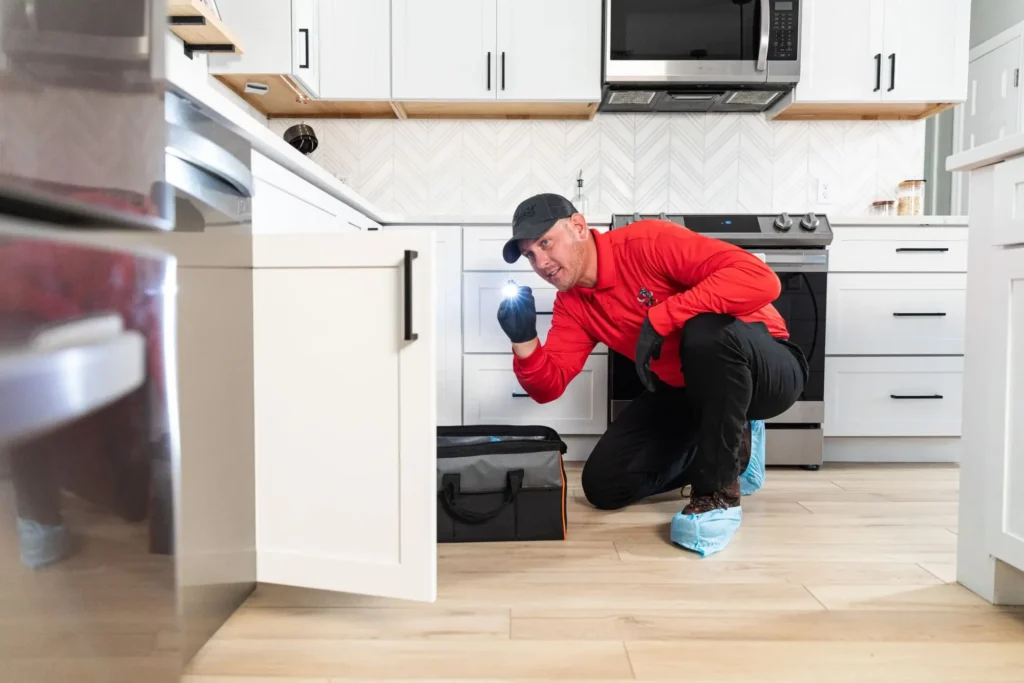
How to Check Your Charleston Home for Cockroaches
Work methodically from the kitchen outward with a flashlight. Glide the beam along toe-kicks, hinge lines, and drawer rails; pause behind refrigerators and dishwashers where heat and condensation coexist. In bathrooms, inspect pipe penetrations, shutoff escutcheons, and the vanity’s rear corners; in laundry rooms, look around the washer pan and dryer vent. Check mechanical closets and water-heater nooks—especially in homes with limited airflow. In raised houses and older buildings, peek into the crawl space for standing water, damaged vapor barriers, and unsealed penetrations. Outside, follow the first foot of soil around the slab, porch steps, and crawl-space vents; examine weep holes and places where vines or shrubs touch the house. If you manage a carriage house or short-term rental, add quick checks between stays—sealed pantry storage, a wipe under appliances, and a glance at traps can reveal activity before guests do. When in doubt, take a close photo or capture a specimen on clear tape; we’ll confirm the species and tune the plan.
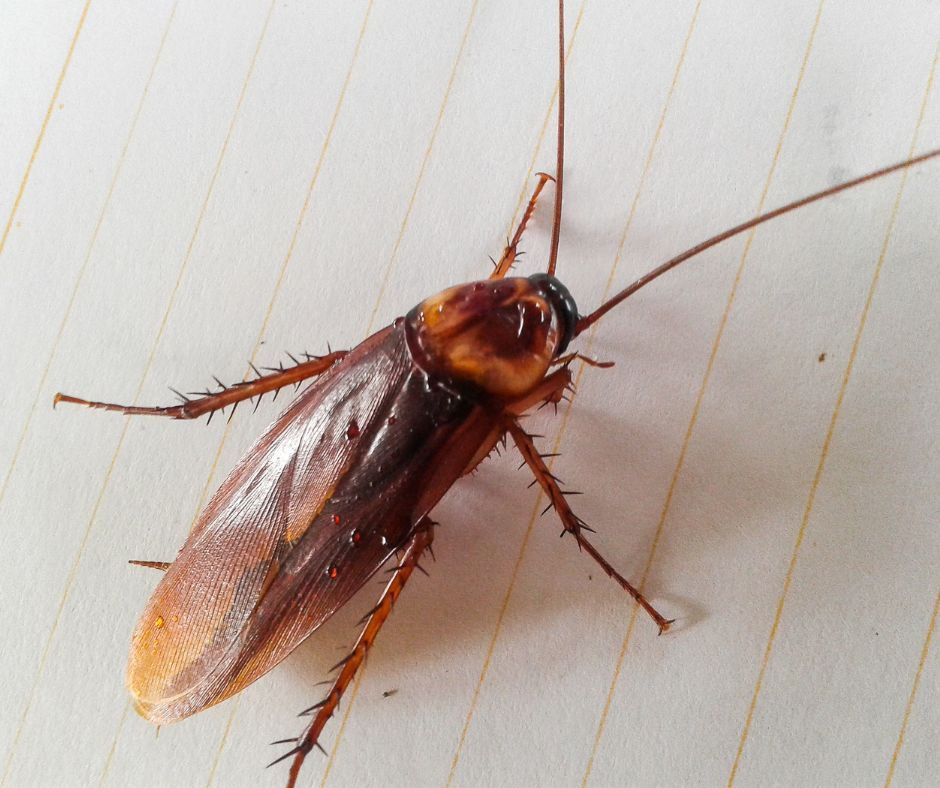
What Do Cockroaches Look Like in Charleston, SC?
American Cockroach (Palmetto Bug)
Reddish-brown and up to two inches long, with a yellowish figure-eight on the shield behind the head. Common in sewers, storm drains, and commercial kitchens, American cockroaches often enter through utility lines, floor drains, and gaps at door thresholds. In Charleston, they surge after heavy rain or spring tides, then settle into garages, crawl spaces, and first-floor bathrooms unless those zones are sealed and dry.
Smokybrown Cockroach
Uniform mahogany brown, glossy, and roughly 1¼–1½ inches long. A strong flier associated with tree canopies, rooflines, and dense landscape beds in humid areas like James Island and West Ashley. Attracted to nighttime lighting, Smokybrowns often show up around porch lamps and soffits, then slip inside through attic or eave vents unless screened.
German Cockroach
Small (½–⅝ inch), tan to light brown with two dark racing stripes behind the head. The primary indoor species found in apartment kitchens, foodservice settings near King and Meeting streets, and multifamily buildings across North Charleston and Goose Creek. Precision baiting, sanitation, and non-repellent products are essential because German roaches reproduce quickly and hide deep in hinges, electronics, and warm appliance gaps.
Brown-Banded Cockroach
Small and light brown with faint banding, often seen higher up—inside upper cabinets, behind wall hangings, or in bedrooms and living areas where it’s drier and warmer. Brown-bandeds are less tied to kitchens and baths, which can confuse DIY efforts; correct ID prevents wasted treatment in the wrong zones.
Australian Cockroach
Similar in size to the American but with bright yellow margins on the wings. It favors lush, irrigated landscaping—azaleas, ligustrum, and jasmine borders are common—and can dart indoors through poorly sealed thresholds or patio sliders, especially in Mount Pleasant and Daniel Island neighborhoods with heavy watering cycles.
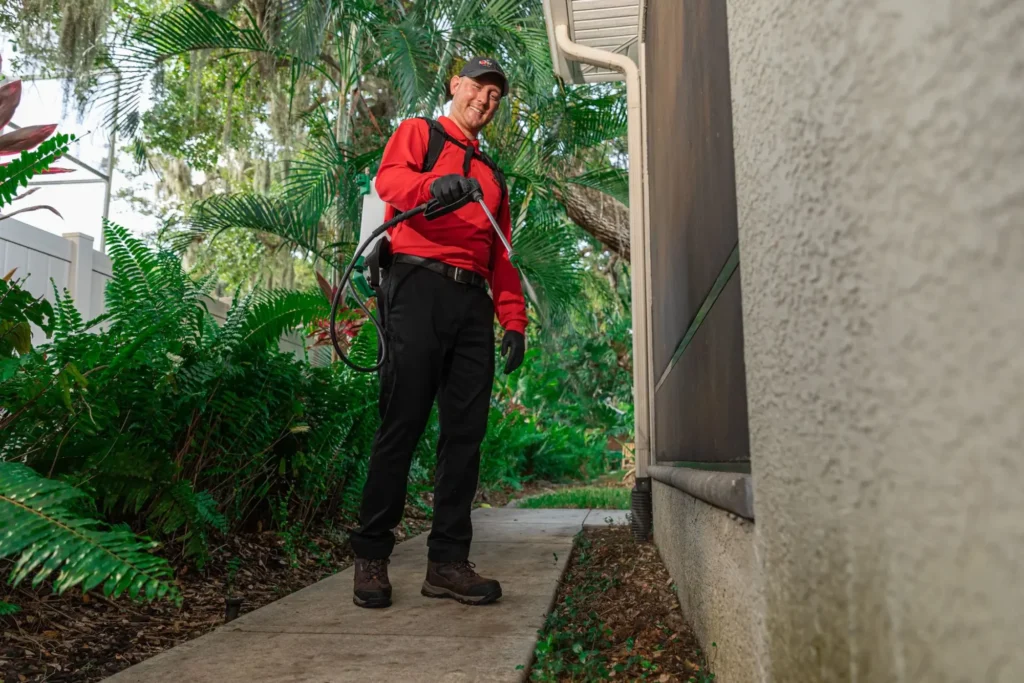
Eco-Friendly Solutions for Cockroach Control
We build every Charleston plan around Integrated Pest Management (IPM)—inspection, precise placement, exclusion, and monitoring—so we can do more with less. When we treat, we favor targeted, non-repellent formulations that stay where roaches live, not where people do. In dry voids, desiccating dusts create long-term roadblocks; in high-traffic harborage, baits remove the colony quietly. If you prefer a lighter interior footprint—common in historic homes with sensitive finishes—ask about an exterior-first maintenance plan. By tightening the perimeter, controlling moisture, and dialing in storage and sanitation, we keep pressure low so interior treatments stay minimal. We’ll also advise on entry-point screening that fits Charleston’s architecture, from soffit and gable vents to crawl-space doors and decorative lattice.
Eco-conscious doesn’t mean “soft.” In practice, it means we focus effort where it counts: removing the moisture, warmth, shelter, and food that draw roaches in coastal environments. That’s better for your household and the Lowcountry ecosystem that surrounds it.
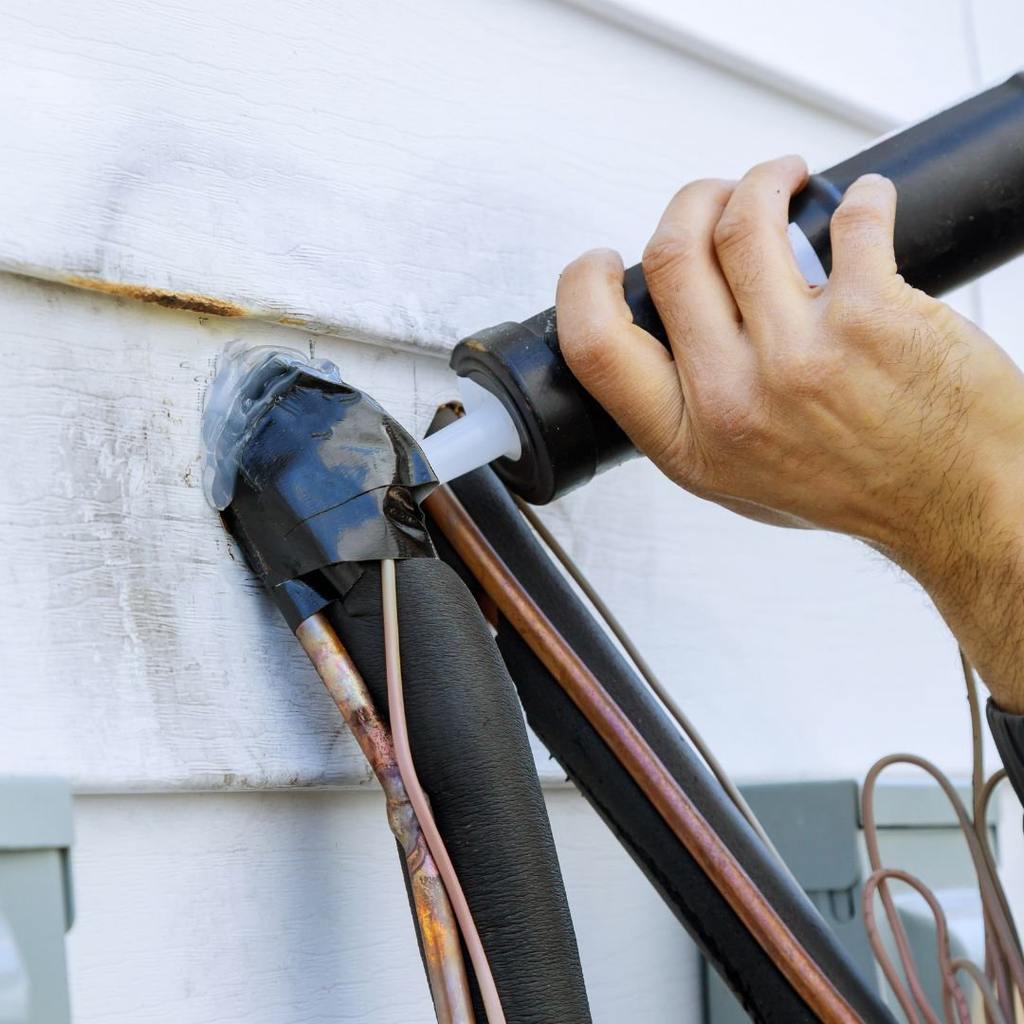
Preventing Cockroaches in Charleston, SC
Think layers: seal, dry, deny, and maintain—applied the Lowcountry way. Start by sealing small gaps at doors, windows, and utility penetrations; add door sweeps on porch entries and consider weep-hole covers that preserve airflow while stopping pests. Keep things dry by fixing drips, insulating sweating pipes, and managing AC condensate so it drains away from brick piers instead of pooling beneath the house. In crawl spaces, a dry, intact vapor barrier and proper ventilation pay off by making the whole structure less attractive.
Next, deny food. Use airtight pantry containers, wipe counters nightly, and don’t forget the hidden grease and crumbs under ranges and refrigerators. Feed pets on a schedule and elevate bowls in laundry or mudroom areas where humidity lingers. Outside, pull mulch and pine straw back from the foundation a few inches; thin hedges and cut vines so foliage doesn’t touch siding; store firewood off the ground and away from walls; and keep lids tight on trash and recycling—especially during summer heat.
Finally, maintain a simple monitoring routine. A couple of glue boards in kitchens and mechanical closets provide early warnings so we can respond before populations build. If a storm or king tide floods low areas near your home, let us know; we’ll adjust placements to intercept the wave of palmetto bugs that often follows.
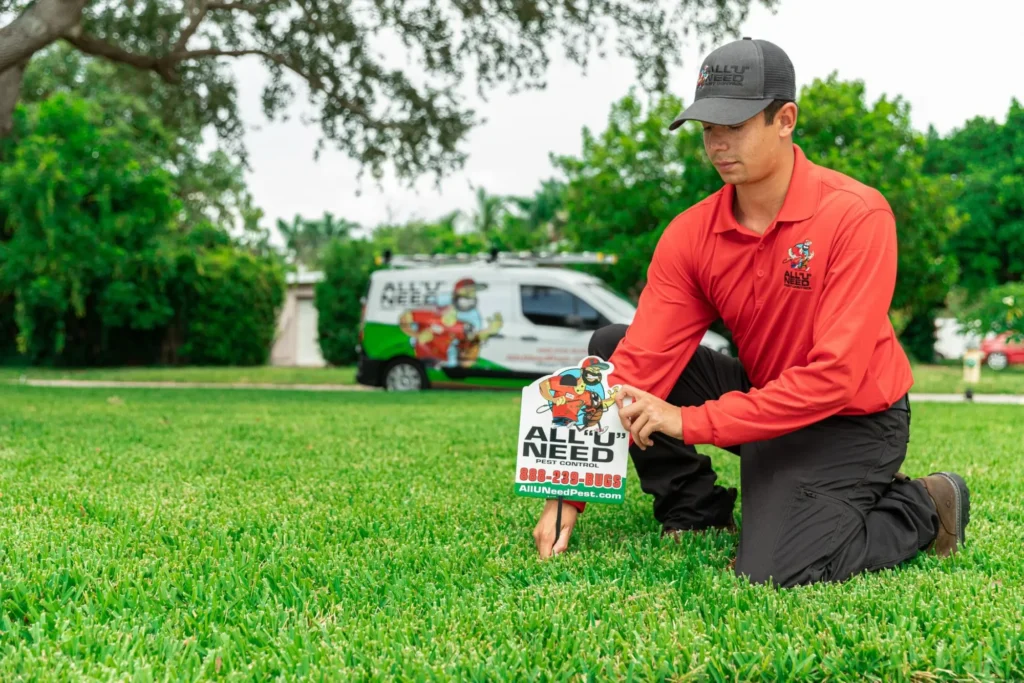
Exterminate Cockroaches From Your Charleston Home with All U Need Pest Control
You don’t have to live with roaches—not in a city built for porches, oyster roasts, and long evenings outside. All U Need Pest Control delivers fast, discreet, and effective cockroach control in Charleston, SC—tailored to your house type, your neighborhood, and our coastal climate. We’ll identify the species, eliminate the colony, close entry points, and set a prevention plan that keeps protection active through Charleston’s hottest, wettest months.
Serving the entire tri-county area—Downtown Charleston, West Ashley, Mount Pleasant, North Charleston, Daniel Island, James Island, Johns Island, Hanahan, Goose Creek, and Summerville, plus barrier islands including Folly Beach, Sullivan’s Island, and Isle of Palms—we make scheduling simple and follow through with the kind of communication you expect from a local, professional team.
Ready to take your kitchen—and your peace of mind—back for good? Call (888) 239-BUGS (888-239-2847) or book online today. We’ll put a Lowcountry-smart plan in motion and keep your home welcoming for guests—not for roaches.
Location Contact:
419 N Cedar St Summerville, SC 29483
Get Directions for 419 N Cedar StSummerville, SC 29483 on Google Maps843-489-8818
Call All "U" Need Pest Control